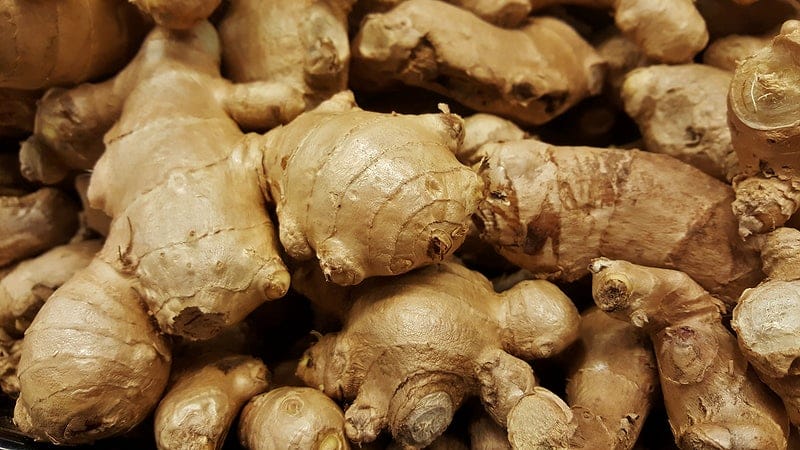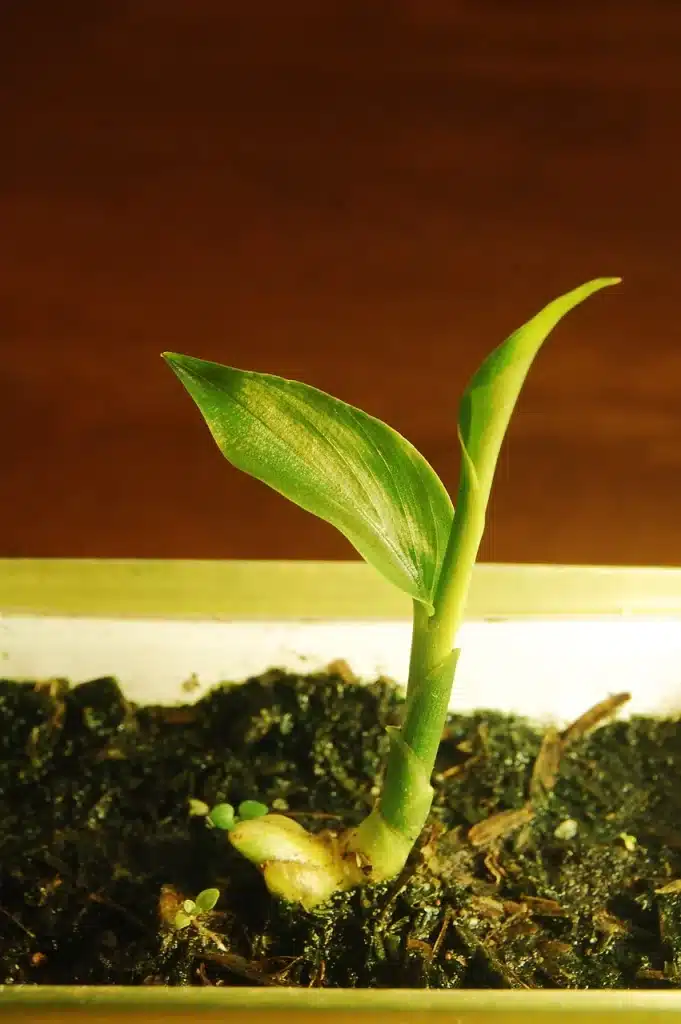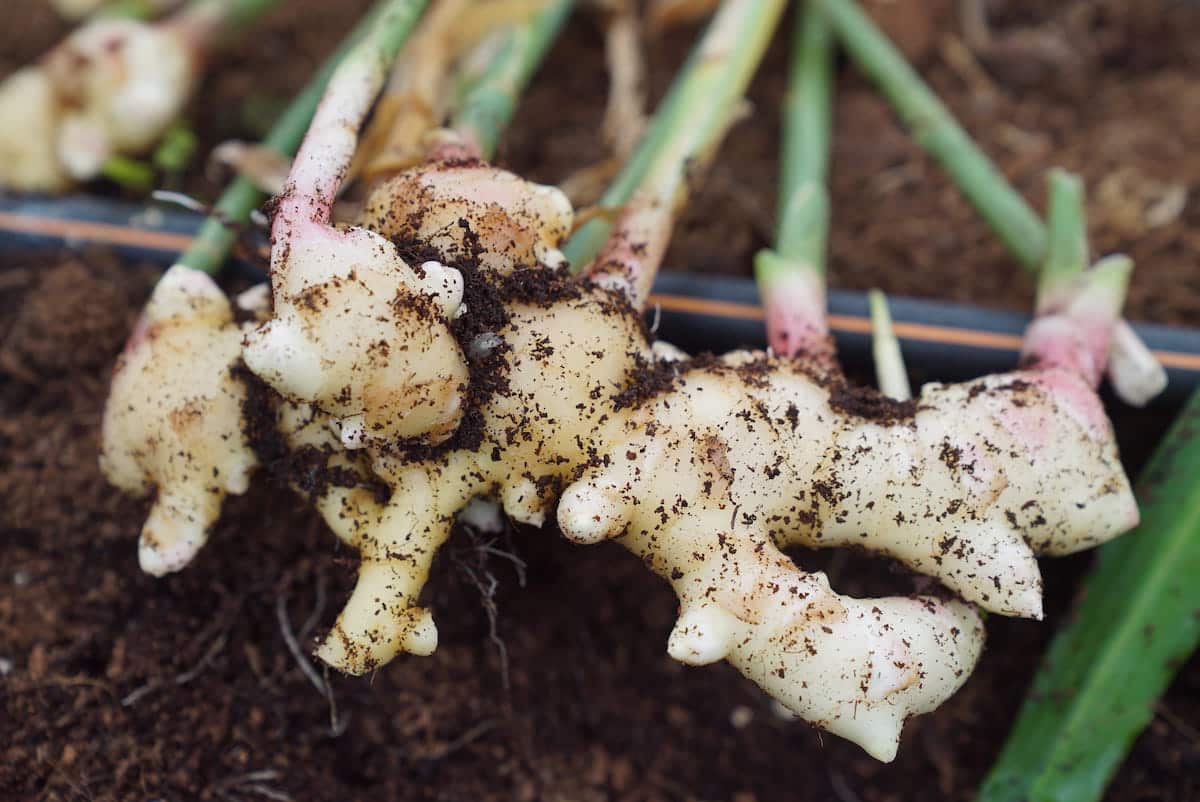Ginger is a culinary herb that is an important staple in many cuisines, especially in Asia. Naturally, growing ginger in your own home can prove to be beneficial in more than one way. While ginger is a tropical plant and is best grown in warm and humid climates, with some expertise, you can grow ginger almost anywhere. In this article, you will find out what ginger is and how you can grow it in your own backyard!
Ginger and Its Amazing Properties
Ginger is mostly grown in regions including Asia and West Africa. People in these areas even have ginger growing in their backyards because of its practicality. Ginger can be diced, minced, or shredded. It is not only the ginger root that is useful. People also use ginger powder as a spice in cooking. Ginger not only has culinary importance but is also a very effective medicinal herb. Doctors recommend ginger because of its anti-inflammatory properties. The herb has a strong pungent smell because gingerol can aid in digestion, reduce nausea, and fight colds. Ginger is also a rich source of magnesium, potassium, copper, and vitamin B6.

Growing Ginger All by Yourself
Growing ginger can prove to be a fairly easy process given that you are aware of what the plant needs. Here are some steps you need to follow if you want to grow ginger!
Knowing the Right Time to Plant Ginger
A very important piece of information is knowing when you can plant ginger. You can take extensive care and it can still be unsuccessful if the conditions are not favorable. Early spring is an ideal time if you are looking to plant ginger in your backyard. However, if you are planting ginger in colder weather, then it is better to do so in a planter so you can bring it inside at night time. The best time to harvest the plant is in winters, as at that time, the leaves begin to fall. Planting ginger in spring will also allow you to harvest the plant by the time winter arrives. A ginger plant can take eight to ten months to fully grow.
Getting the Ginger Root

The most common and widely used variety of ginger is the zingiber officinale. We recommend that you also use zingiber officinale if you are growing ginger for the first time. Ginger roots are easily available from any local supermarket. However, you must ensure that the ginger roots you choose are young and plump and also have growth buds on their tips. Planting such a ginger root will increase your chances of success!
Preparing the Soil
The area where you plant ginger should get at least 2 to 5 hours of direct sunlight. The planting area should also be protected from strong winds. Ginger thrives in soil that is loose and rich in organic matter. Such a soil helps in water drainage and also prevents the plant from getting waterlogged. A good idea would be to add thick mulch to the soil as it can control weeds.
Cutting the Ginger Root
You can plant a single ginger root or cut it into small pieces in order to grow multiple plants. First, you have to cut your ginger root into small pieces and let it dry for a day or two so it hardens. While cutting your ginger, you have to make sure that each piece has a growth bud to ensure that it sprouts properly. The ginger pieces should be at least 1 and a half-inch long.
Planting Ginger
- SEED STARTER KIT -- Pack of 60 peat pots. Each pot measures 3 inch in diameter. Comes with 15 pcs plant labels, and you can use them to mark the seeds in your peat pots.
- START INDOOR GARDEN -- Starting an indoor garden is easy with our bulk pack of organic peat pots. Simply place your seeds into the seedling transplant pot.
- 100% BIODEGRADABLE -- Once the seeds sprout, just transplant the whole pots directly into the ground or larger plant pots. These will break down in the soil in the end, environmentally friendly.
Prices pulled from the Amazon Product Advertising API on:
Product prices and availability are accurate as of the date/time indicated and are subject to change. Any price and availability information displayed on [relevant Amazon Site(s), as applicable] at the time of purchase will apply to the purchase of this product.
If you are planting multiple ginger pieces, plant them 8 inches apart from each other. Ginger plants can grow and reach a height of 2 to 3 feet. If you live in a region with a cold climate, we suggest that you initially plant the ginger roots in peat pots so you can bring them inside at night. Moreover, you can also get a grow light which you can install indoors above your planters/pots.
- Roleadro Grow light is an infrared grow light that is great for indoor plants.
- Unique 90 degree optical lens and Eplieds 10w chips design bring higher PAR value(453umol at 18”) and Lumen output than others.
- This plant light adopted led bead and zener design instead of the reflector to ensure if one led out won’t affect others’ leds.
Prices pulled from the Amazon Product Advertising API on:
Product prices and availability are accurate as of the date/time indicated and are subject to change. Any price and availability information displayed on [relevant Amazon Site(s), as applicable] at the time of purchase will apply to the purchase of this product.
Fertilizers for Optimal Ginger Growing
- Miracle-Gro Performance Organics All Purpose In-Ground Soil delivers up to 2X more bounty (vs unfed plants)
- Use for growing vegetables, flowers, and herbs, and amending garden beds
- Feeds plants for up to 3 months
Prices pulled from the Amazon Product Advertising API on:
Product prices and availability are accurate as of the date/time indicated and are subject to change. Any price and availability information displayed on [relevant Amazon Site(s), as applicable] at the time of purchase will apply to the purchase of this product.
If you are thinking of planting ginger, there are some products that can help its growth process. For example, if you think your soil condition is not ideal, try adding organic soil and fertilizers as you plant the ginger roots. You can further add liquid fertilizers every few weeks to make sure the plant gets enough nutrients. These steps become essential if you live in a region that receives heavy rainfall. Rain can rid the soil of its important nutrients and hence it will need an outside intervention to make up for that loss. Adding compost is another good option as it retains water and supplies the essential nutrients. While choosing the fertilizers, you can check if they have high level of phosphorus as it proves to be great for ginger growth.
- STRONGER ROOT DEVELOPMENT: Bone Meal is a natural source of vital, readily available organic nitrogen, phosphorus and calcium.
- ADD TO SOIL: Add to soil or potting mix during seed starting or at any time prior to harvest to fuel strong roots and early, healthy plant growth.
- ORGANIC CERTIFIED: OMRI listed for organic gardening, Bone Meal is ideal for new bedding plants.
Prices pulled from the Amazon Product Advertising API on:
Product prices and availability are accurate as of the date/time indicated and are subject to change. Any price and availability information displayed on [relevant Amazon Site(s), as applicable] at the time of purchase will apply to the purchase of this product.
Watering Your Ginger Plant
Watering your plant, especially in the initial stages, is extremely important. In the case of a ginger plant, you must water it while it is growing so it does not dry out. It is important to keep a balance and make sure that you do not overwater either. During warmer climates, regularly spray your ginger plant with water to keep it hydrated. When the weather cools down, reduce the watering. At this point, the plant will begin to form underground rhizomes. During fall or late summer, the stem of plants will also die. So if you notice the stems dying, stop watering the plant altogether.
Growing Ginger in Colder Climate
If the climate gets colder, ginger can go into hibernation and may not survive it. If the temperature goes below 32 degrees F, the foliage can die. In any case, keep the plant safe from frost and harsh weather. As soon as you suspect threatening temperatures, you should move it indoors. The pot you shift your ginger plant in should be well-draining so there is no chance of root rot. Choose a pot that is big enough so the plant can flourish in it. Place the pot in a warm corner where it can grow until the weather stabilizes. Once the temperature rises, you can move the pot outside again.
How to Grow Ginger – Final Thoughts
Having a vegetable garden will always be incomplete if you do not have this remarkable herb in it! Growing ginger by yourself will prove to be more rewarding than you think. If you are not already aware of ginger’s multiple culinary uses, we recommend that you also do some research on it. We promise you that you will not get enough of this plant once you grow it in your backyard. After your ginger is fully grown, you can peel off its skin and enjoy it in whichever way you like!










